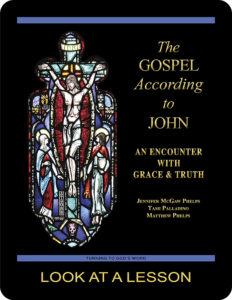rock
 In the Gospel According to Matthew 16:13–23 (NABRE), Simon proclaims Jesus the Son of God, and Jesus in turns renames Simon as Peter or rock. Typically in the Bible, a renaming is a deeply serious matter of profound significance regarding who that person is intended to become, and this particular event has come to have great meaning for the Church.
In the Gospel According to Matthew 16:13–23 (NABRE), Simon proclaims Jesus the Son of God, and Jesus in turns renames Simon as Peter or rock. Typically in the Bible, a renaming is a deeply serious matter of profound significance regarding who that person is intended to become, and this particular event has come to have great meaning for the Church.
The name Peter comes from the Greek word πέτρα (petra), which means rock. It’s worth noting that the root word is feminine and it’s adjusted to be masculine as Peter’s name, a phenomenon we don’t often see in English. There is no record of the word rock being used as a name prior to Christian times. In the Gospel According to John 1:42 (NABRE), Jesus renames Simon Cephas, which comes from an Aramaic word that the Fourth Gospel explains also means rock.
In the Gospel According to Matthew 4:18 (NABRE), Peter is identified as “Simon, who is called Peter.” Simon is a common Hebrew name that derives from a word that means “listen.” It’s clearly a deeply important event in multiple languages that Peter be named rock. Why do you think that we continue to call him Peter in English? How would it change your view of him if we did refer to Peter as Rock?
The significance of Peter’s name is emphasized in the Solemnity of Saints Peter and Paul, traditionally observed on June 29. Peter became the rock upon which the Christian Church was built. How do you think the Church as a rock continues to support Christians today?
related topic: name
you also may like our study of the Gospel According to John
 The Gospel According to John: An Encounter with Grace & Truth, a 25-lesson Catholic Bible study with an imprimatur, examines the Fourth Gospel’s view of Jesus Christ as the Son of God, with special emphasis on the institution of the sacraments of the Church as the means by which Christians are purified and made holy. This recently revised study includes maps and additional commentary, and takes a closer look at the way in which Jesus relates to individual men and women. Click on the book’s cover to view a sample lesson.
The Gospel According to John: An Encounter with Grace & Truth, a 25-lesson Catholic Bible study with an imprimatur, examines the Fourth Gospel’s view of Jesus Christ as the Son of God, with special emphasis on the institution of the sacraments of the Church as the means by which Christians are purified and made holy. This recently revised study includes maps and additional commentary, and takes a closer look at the way in which Jesus relates to individual men and women. Click on the book’s cover to view a sample lesson.
 Click on the picture of the statue of Moses with horns (above) to learn more about Lost in Translation. A new entry is archived each Monday. Contact us to receive Lost in Translation by email every week. You may use any of the contact links on our website to ask Matthew a question.
Click on the picture of the statue of Moses with horns (above) to learn more about Lost in Translation. A new entry is archived each Monday. Contact us to receive Lost in Translation by email every week. You may use any of the contact links on our website to ask Matthew a question.
